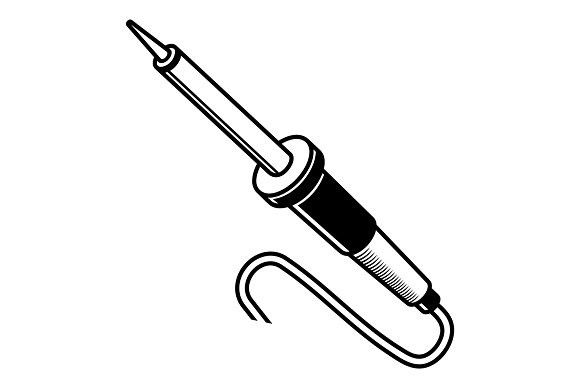#Isopropyl Alcohol
If you’re soldering you need isopropyl alcohol (or another alcohol. I have methyl, ethyl, and isopropyl in wash bottles under my desk all the time. Be forewarned that if you’re using methyl the molecule is small enough to move through your skin easily and it’s toxic so be cautious.) I have a wash bottle under my desk. I keep a little pill bottle full of isopropyl alcohol on my desk that I drop little boards in when I build them and shake to clean. You’ll also need a little brush but I’ll cover that next.
You need to clean the flux off your solder joints because your boards look nasty if you don’t and the flux can corrode the traces on the board and the pins on your components.
#Brushes
I use a simple acid brush that you can buy individually or in bags of 10 at any hardware store for a couple of dollars.

I drill a small hole through the ferrule and put an M3 machine screw through with washers on either side to hold the bristles in place. I then cut the bristles down so that they are shorter and stiffer.

When I’m cleaning I add isopropyl alcohol, scrub with the acid brush, then rinse with clean isopropyl alcohol.
#KimWipes
This is one that I’ve had around for years but didn’t think to use when soldering. They are a laboratory wipe and they are lint free. I use them with isopropyl alcohol to wipe anything I don’t want to leave a bunch of lint on. They’re relatively expensive but if you only use them for cleaning with alcohol a box will likely last you for years. You can buy KimWipes on Amazon by the box.
#Polyamide/Kapton Tape

This stuff is AWESOME! If you’ve taken apart old electronics of seen inside a spacecraft you’ve likely seen kapton tape. It’s the same color as old amber beer bottles. The nice thing about it is that it’s tolerant of extremely high temperatures. You can tape things down that you’re soldering and it won’t melt unless you heat it directly. It’s good from -269°C (-452°F) up to 400°C (752°F). The stuff is magic.
#Solder Removal - Solder Wick

When you’re soldering things you’re eventually going to want to desolder something. The first thing most people use is solder wick. It’s a braid of fine copper wires coated in flux. You place the solder wick on the solder joint, heat is up, the solder melts, and wicks into the solder wick. With practice you can get good at removing components with solder wick.
You will move on from solder wick, though, to a solder sucker at some point. Keep the solder wick. I use it after I’ve removed components with the solder sucker to really clean up the pads in preparation for resoldering.
#Solder Removal - Solder Sucker

The venerable solder sucker. It’s a spring loaded monstrosity that does a decent job in certain circumstances. When you only have access to one side of the board you have to heat the joint, remove the soldering iron, place the solder sucker, and press the button before the solder melts hoping that you remembered to push down the plunger. They can be frustrating to use. When you have access to both sides of the board you can heat from one side and suck from the other. With practice you can suck the solder out of a join so completely that the component lead just pulls or falls out of the hole.
#Tip Cleaner/Tip Tinner

Maintenance of your soldering iron tip is essential. A clean, well tinned tip makes everything about soldering easier. In fact, in aerospace soldering you clean the solder wire and cut a short piece, clean the joint to be soldered, and clean and tin your tip before soldering each joint. I ordered a copper scrubber style tip cleaner off AliExpress. Just between us, I ordered 4 because they were cheap. I modified mine by adding a disk of thick steel to the inside of the base and a silicone rubber disk to the outside so that it doesn’t move around. I quickly stick my tip in every two or three joints then get right back into the soldering. When I’m ready to put my iron away at the end of the session I jab it in three or four times moving it around to really clean off the tip then I heavily tin the tip, shake off the excess, and hang up my iron in the holder.
The tip tinner is a mixture of solder powder and aggressive flux. You turn your iron up high, melt it into the cleaner, then stir it around a bit. It really cleans up and tins your tip.

